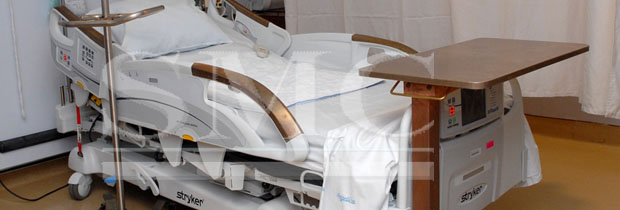Anti-microbial Properties of Copper
For years the medical industry has used stainless steel as a durable, anti-rust metal for a variety of applications: bed rails, door hardware, operating tables, etc. While stainless steel does have a variety of benefits, new discoveries on the properties of copper alloys have shifted the medical industry away from stainless steel towards copper. For thousands of years people have known about the anti-microbial properties of copper, bronze and brass. In 1983, it was confirmed by P. Khun by testing microbial growth on hospital doorknobs, that copper and brass alloys have anti-microbial properties.
Two decades following the first confirmation of copper’s antimicrobial properties, it has been tested and verified by the US’s Environmental Protection Agency (EPA). Independent labs found that in less than two hours copper alloys kill potentially deadly disease causing bacteria such as E. Coli and methicillin-resistant Staphylococcus aureus (MRSA), vancomycin-resistant Enterococcus faecalis, and more. Following a review by the EPA, it has been concluded that in less than two hours copper alloys can reduce bacteria by over 99.9%. This is in comparison to stainless steel and plastic surfaces under the same conditions, where no killing of bacteria was observed. According to the EPA, there are over 350 different copper alloys that possess anti-microbial properties. Any copper alloy with a content of 60% or more copper is anti-microbial. The affects natural tarnish has on copper has also been tested. The tests found that tarnish has no affect on coppers anti-microbial properties. The EPA has placed regulations on anti-microbial copper production. Any product produced with EPA anti-microbial alloys contains the the symbol Cu+.

While copper and copper alloys anti-microbial attributives are great, they can not be relied upon to prevent cross contamination. It is recommended that these products be cleaned in accordance to the regulated hygienic practices. In order to maintain the anti-microbial properties, the copper must not be painted, waxed, varnished, or coated in anyway. These copper alloys are not registered for use in food or drinking applications.
Copper, brass, and bronze’s anti-microbial properties have been known and implemented in the medical field for thousands of years. After the confirmation of it’s anti-microbial properties two decades ago, further tests have demonstrated copper’s ability to kill bacteria. While stainless steel is still the dominant metal used in the medical industry, recent findings on the properties and benefits of copper alloys may soon change that.
Shanghai Metal Corporation is a trusted aluminum alloy, aluminum foil price, stainless steel price and stainless steel manufacturer, kinds of stainless steel in china.
Guest contributors are welcome at the Alloy Wiki.It is a weekly wiki and guide on alloy information and processing technology, while also about the vast array of opportunities that are present in manufacturing. Our team of writers consists of a Machining Material Supplier / Machinist / Tool and Die Maker, a Biomedical Engineer / Product Development Engineer, a Job Development Coordinator / Adjunct Professor, and a President and CEO of a manufacturing facility.
Link to this article:Anti-Microbial Properties of Copper
Reprint Statement: If there are no special instructions, all articles on this site are original. Please indicate the source for reprinting:Alloy Wiki,thanks!^^


